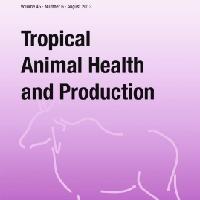Resumen
-
The growth and differentiation factor 9 (GDF9) intervenes in the fecundity and prolificacy of the ewe, which are important variables that participate in the reproductive efficiency of a flock. The objective of this study was to evaluate the influence of FecGE mutation of the gene GDF9 in the natural response of the manifestation to estrus, return to estrus, ovulation rate, pregnancy, lambing, prolificacy, and fecundity rate in Pelibuey ewes, during the anestrus period. The sequences of the exon 2 of the gene GDF9 were obtained from blood samples collected in hatman™FTA™cards from 42 multiparous Pelibuey ewes with reproductive records. For this purpose, the quality of the sequences was analyzed and the polymorphisms and genotypes were searched for. The ewes were grouped according to their group: (a) homozygous or Embrapa (GG), (b) wild (AA), and (c) group without gene (sG). All the ewes studied manifested estrus behavior, but none showed signs of return to estrus after natural mating (p > 0.05); likewise, the pregnancy and lambing rates (p > 0.05) did not show differences between groups. However, the group GG presented higher ovulation rate, prolificacy, and fecundity rate (p < 0.05), compared to groups AA and sG. Although no differences were found in the manifestation of estrus, return to estrus, and percentage of pregnancy and lambing in females from the genotypes studied, the homozygous ewesGG presented 1.22 and 1.72 more corpus luteum (CL, p < 0.05), prolificacy of 0.7 and 0.7, and fecundity rate of 0.8 and 1.0 more lambs per ewe (p < 0.05) than the ones produced by the wild-type AA and sG groups, respectively.
